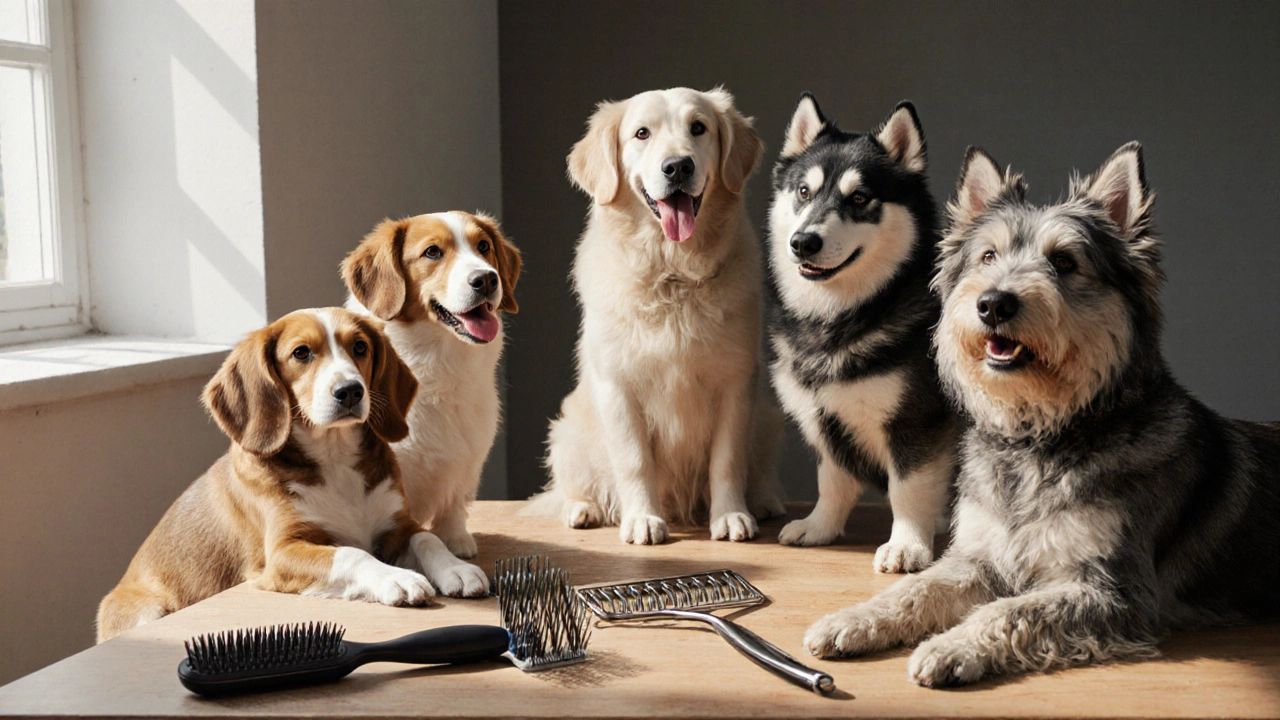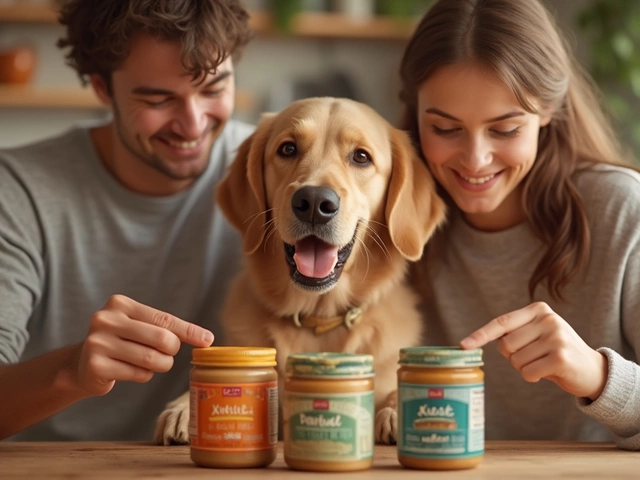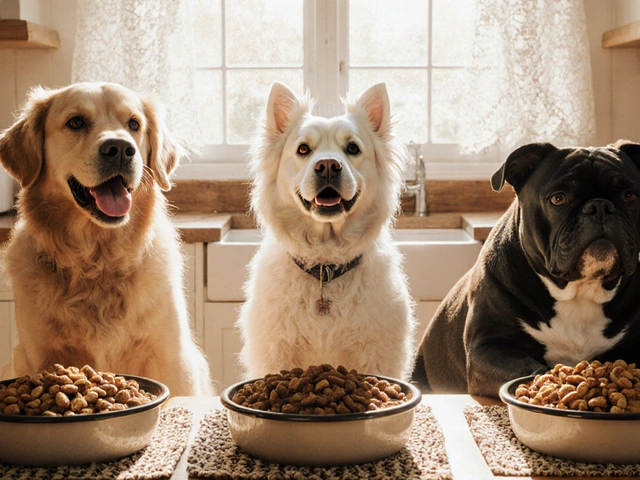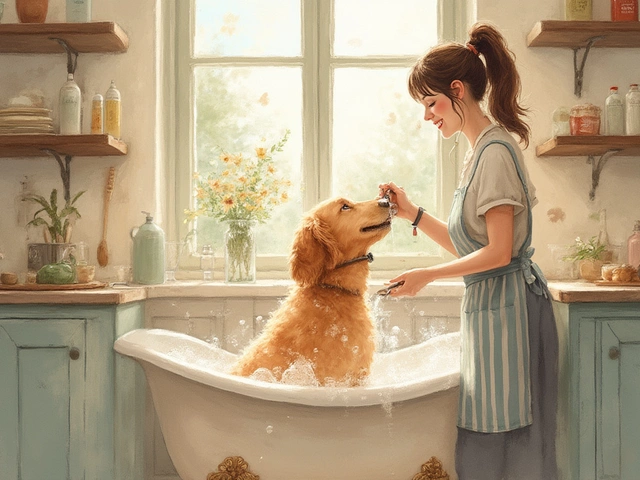Dog Grooming Frequency Calculator
Recommended Grooming Schedule
When you wonder dog grooming frequency, the answer isn’t a one‑size‑fits‑all number. It depends on the pup’s breed, coat type, lifestyle, and health. Below you’ll find a practical roadmap that tells you how often to brush, bathe, and trim so your dog looks great and feels comfortable.
Quick Takeaways
- Short‑coated dogs: brush 1-2times a week, bathe every 8-12weeks.
- Medium‑coated dogs: brush 2-3times a week, bathe every 6-8weeks.
- Long or double coats: brush daily, bathe every 4-6weeks.
- Health issues, allergies, or heavy shedding may require more frequent care.
- Professional grooming is worth it when the coat needs clipping, de‑shedding, or special skin treatment.
Dog grooming is the routine of cleaning, brushing, and trimming a dog's coat, nails, ears, and teeth to keep the animal healthy and comfortable. It also includes checking skin for parasites, irritation, or infection. Regular grooming helps prevent matting, reduces shedding, and gives owners a chance to spot health problems early.
Understanding Dog Coat Types
Coat type refers to the texture, length, and density of a dog's fur. The most common categories are short, medium, long, double, and wiry. Short coats, like those of a Beagle or Boxer, lie close to the skin and shed lightly. Medium coats, seen on Border Collies or Australian Shepherds, require more attention. Long coats, such as those of a Golden Retriever or ShihTzu, can tangle quickly. Double coats-think Siberian Husky or Alaskan Malamute-have a soft undercoat beneath a harsher outer layer. Wiry coats, like the Scottish Terrier, need hand‑stripping rather than regular clipping.
How Often Different Coats Need Grooming
The table below gives a quick reference for brushing, bathing, and trimming based on coat type.
| Coat Type | Brush | Bath | Trim / Clip |
|---|---|---|---|
| Short | 1-2times/week | Every 8-12weeks | Only if nails or hair grow excessively |
| Medium | 2-3times/week | Every 6-8weeks | Every 8-12weeks |
| Long | Daily | Every 4-6weeks | Every 6-8weeks |
| Double | Daily during shedding season, 3‑4times/week otherwise | Every 4-6weeks | Every 8-12weeks (if trimming needed) |
| Wiry | 2times/week | Every 8-12weeks | Hand‑strip or clip every 6-8weeks |
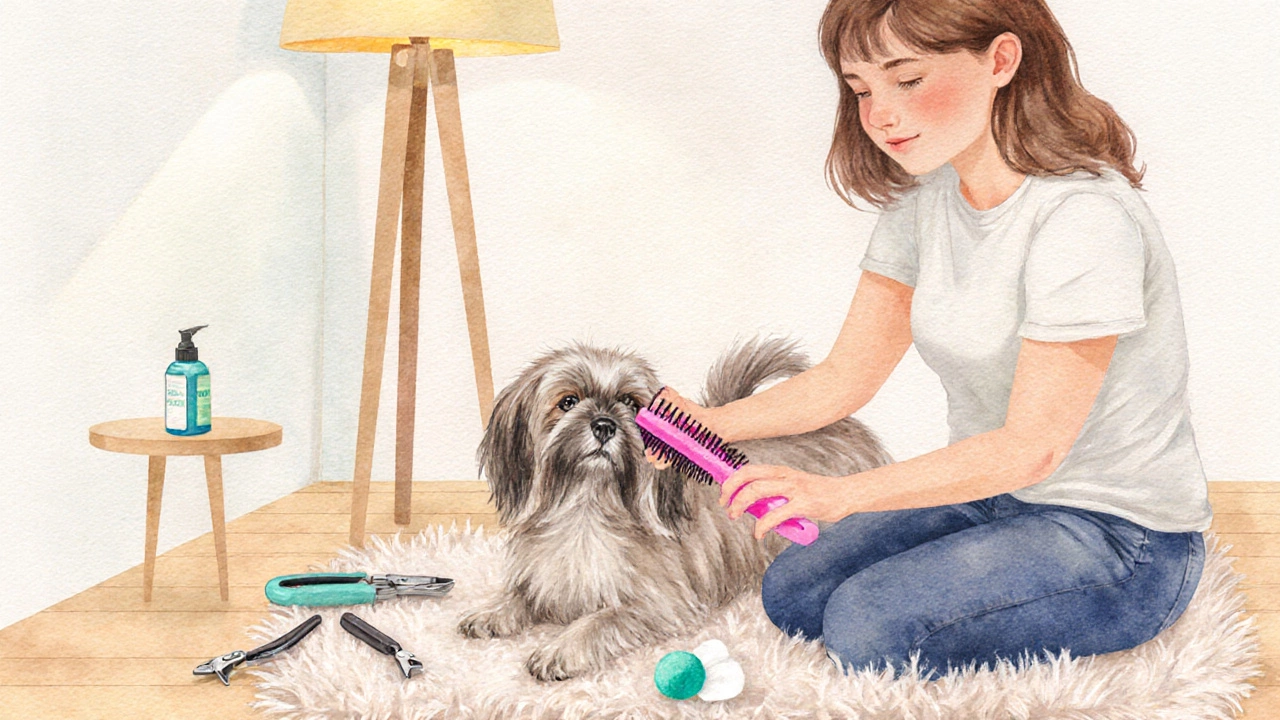
Factors That Influence Grooming Frequency
Even within the same coat category, several variables can shift the schedule.
- Breed genetics dictate how fast hair grows and how prone the dog is to matting.
- Activity level matters-active dogs pick up dirt, mud, and parasites faster.
- Skin health conditions like allergies or dermatitis require more frequent washes with medicated shampoos.
- Seasonal shedding: double‑coated breeds drop undercoat heavily in spring and fall, demanding daily brushing.
- Living environment: indoor dogs on hardwood may need less frequent baths than dogs living on farms.
DIY Grooming Basics
Most owners can handle the day‑to‑day upkeep with a few tools.
- Brush - Choose a slicker brush for long coats, a bristle brush for short coats, and an undercoat rake for double coats.
- Nail clippers - Trim when you hear the quick (the pink vein) or use a grinder for a smoother finish.
- Earl cleaning solution - A cotton ball soaked in a vet‑approved cleanser wipes away wax and prevents infections.
- Shampoo - Use a mild, pH‑balanced dog shampoo. For dogs with skin issues, a medicated formula prescribed by a veterinary checkup professional is best.
- Drying - A high‑velocity dryer set on low heat prevents matting without burning the skin.
Start with a calm environment, give treats, and keep sessions short-10‑15minutes for most dogs.
When to Seek a Professional Groomer
Even the most diligent owners hit limits. Call a groomer if:
- The coat is severely matted-unraveling can hurt the skin.
- Your dog has a thick double coat that you can’t manage during peak shedding.
- Specialized haircuts are needed for breed standards (e.g., Poodles, Bichon Frise).
- You notice persistent parasites like fleas or ticks during grooming.
- Your dog shows anxiety or aggression during home grooming sessions.
A reputable grooming salon will conduct a quick health check, recommend appropriate products, and often offer a nail‑trim and ear‑clean service as part of a package.
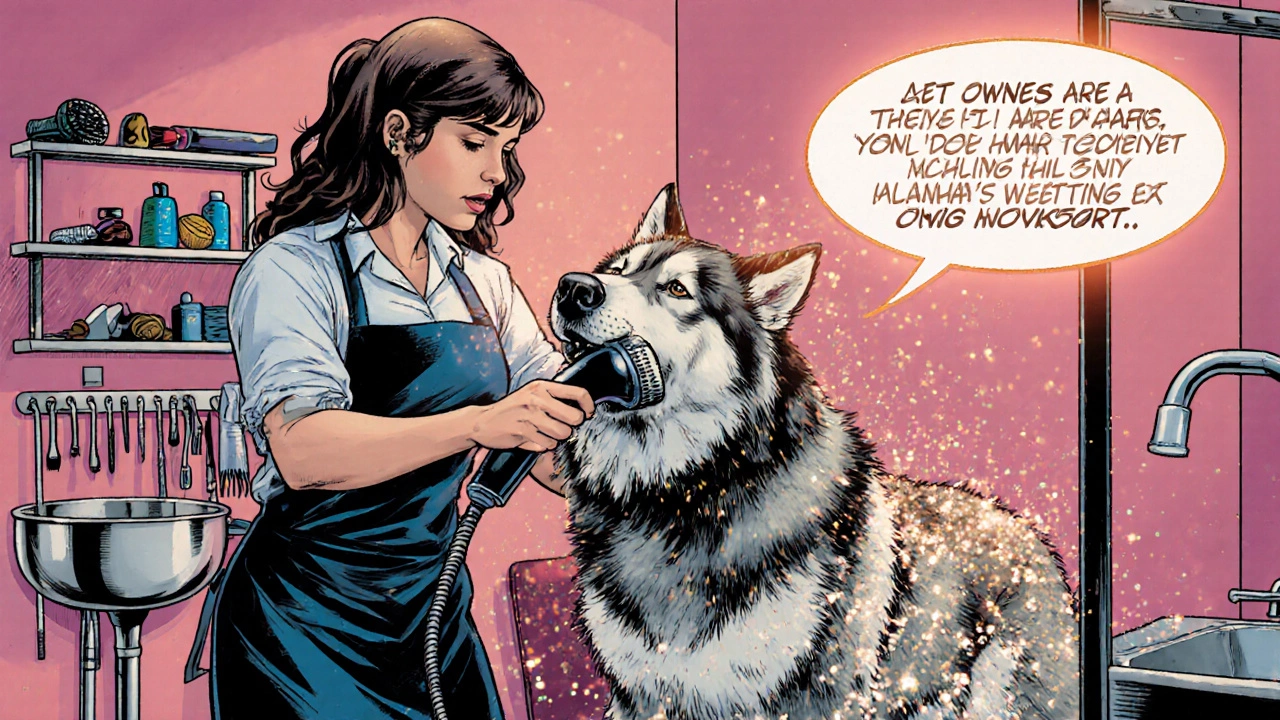
Common Grooming Mistakes to Avoid
- Skipping nail checks-overgrown nails can affect gait and cause pain.
- Using human shampoo-dogs have a higher skin pH; human products can cause dryness.
- Cutting too close to the skin with electric clippers-risk of burns and irritation.
- Neglecting ear cleaning-especially in floppy‑ear breeds, which are prone to infections.
- Grooming during extreme heat-dogs can overheat quickly; choose cooler parts of the day.
Next Steps & Troubleshooting
If you’re unsure whether your routine is enough, follow this quick decision tree:
- Check coat condition: Is it shiny, free of mats, and roughly the same length throughout? If no, increase brushing frequency.
- Smell the coat: Any odor, oily patches, or unusual dampness? Add a bath or see a vet.
- Inspect nails: Can you hear a click on hard floors? Trim now.
- Look at ears: Any dark debris or smell? Clean gently with vet‑approved solution.
- Observe behavior: Does your dog scratch excessively or seem itchy? Consult a vet for skin allergies or parasites.
Making small adjustments each week usually solves most issues without pricey professional visits.
Frequently Asked Questions
How often should I bathe my dog?
Bathing depends on coat type and skin health. Short‑coated dogs can go 8-12weeks, medium‑coated every 6-8weeks, and long or double coats every 4-6weeks. Dogs with allergies or a oily skin may need medicated baths more often, as advised by a vet.
Do I need to clip my dog's nails every month?
If you can hear your dog’s nails clicking on hard floors, they’re getting long. Most dogs need a trim every 3-4weeks, but slower growers may be fine with monthly cuts.
What’s the best brush for a double‑coated breed?
An undercoat rake or a slicker brush works best. Use it daily during shedding season, then 3‑4times a week the rest of the year.
Can I use human conditioner on my dog?
No. Human conditioners have a different pH and can leave residue that irritates canine skin. Stick to a dog‑specific conditioner.
My dog hates brushing-any tips?
Start with short, rewarding sessions. Use a soft brush, give treats after each minute, and gradually increase time. If the dog is still anxious, a professional groomer can help desensitize.

